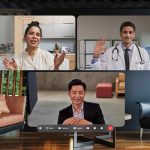SCSI, short for Small Computer System Interface, is an electronic interface that allows PCs and servers to communicate with peripheral hardware like storage devices, printers, and scanners at faster speeds than previous parallel data transfer interfaces. It was ratified by the American National Standards Institute (ANSI) in 1986 as an update to the Shugart Associates System Interface. SCSI is both a physical interface and a communication protocol with the goal of seamlessly connecting computers to peripherals in high-performance environments.
While SCSI is no longer commonly used to connect external consumer hardware devices to PCs, it is still utilized in enterprise server environments for hard drive controllers and block storage devices. It offers various advantages such as backward compatibility and the ability to attach multiple devices to a single cable streamlining connections.
SCSI has evolved over the years, with the most recent Ultra640 SCSI supporting transfer speeds of up to 640 MBps and up to 16 devices. Previous versions like Ultra320 SCSI, Ultra3 SCSI, and Wide Ultra2 SCSI also supported multiple devices at different speeds. However, SCSI is slower compared to newer standards like USB.
Serial-Attached SCSI (SAS) has become a popular alternative to Parallel SCSI in enterprise environments due to its support for more devices, elimination of termination and clock skew issues, and point-to-point technology. SAS is compatible with devices that use earlier SCSI technologies.
In comparison, SATA is another serial bus that replaced Parallel ATA, with SATA-3 supporting speeds of 6 Gbps. SAS devices are preferred for servers and enterprise applications, while SATA devices are typically used in PCs. SAS is backward compatible with SATA-2 and above, but SAS drives cannot be connected to a SATA controller.
Overall, SCSI continues to be a reliable and flexible interface for high-performance storage connectivity, particularly in enterprise server environments.









